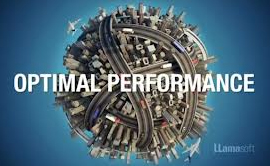 |
February 7, 2013 - Supply Chain Newsletter |
 |
| FEATURED SPONSOR: INTRALINKS |
 |
Reduce Risk when Collaborating with Supply Chain Trading Partners IntraLinks Courier – Free 30 day Trial Be in Control While Easily Sharing Files |
 |
|
|||||||||||||||||||||||||||||||||||||||||||||||||
More Predictions from Our Supply Chain Gurus for 2013
|
||||||||||||||||||||||||||||||||||||||||||||||||||
| GILMORE SAYS: |
"As surprising as it may be, Tyndall says a growing number of companies are realizing they do not really have a clear operations/supply chain strategy." WHAT DO YOU SAY? |
Same pattern this week: I will summarize some highlights here from the six other gurus I cajoled once again into sending me their predictions. Some you undoubtedly will know by name, others maybe not, but I can assure you each is a smart observer of the supply chain scene, or we wouldn't have them. Then next week you'll get the full transcripts of what each sent me under the duress of my constant email reminders relative to the impending deadline. You will enjoy that.
So with that, let's get right to it, starting with Mike Regan, president of TranZact Technologies, a very active member of NASSTRAC, and real advocate for shipper interests, whom I asked to ponder likely developments in the transportation sector.
Unless there is another "Double Dip" recession, "truckload shippers will be dealing with carrier capacity issues this year, especially in the third and fourth quarters." Regan predicts. That is in part because "The looming change in the Hours of Service rules, effective July 2013, will reduce capacity in the truckload sector. According to some experts, the change in the "Restart" provisions could reduce capacity by as much as 3% to 5%," Regan adds.
Driver shortages will also come into play, with a key questions being "How much are trucking companies willing to raise wages to fill the gap?" (Never enough, history shows, from my view.)
Naturally, "Tighter capacity means that carriers will ask for and get higher rates. The magnitude of these rate increases (5% to 7%) will be higher than what most companies have budgeted," Regan says.
Regan also believes LTL carriers are going to get serious about "dimensionalizing" freight charges similar to what UPS and FedEx have done in parcel - which will be bad news for shippers.
"Shippers who rely upon a single class FAK tariff will hear carriers talk about a multi-tiered FAK rate structure or push for actual class-based pricing based on the freight that is being tendered," Regan predicts. Good stuff - shippers watch out!
I asked my good friend Gene Tyndall of Tompkins International to make some predictions relative to supply chain strategy. He prefers the term "views" to predictions, smartly giving himself a little wiggle room in these volatile times, and here are some of my favorites from the five he offered:
First, as surprising as it may be, Tyndall says a growing number of companies are realizing they do not really have a clear operations/supply chain strategy.
 "What capabilities do our supply chains need to provide to the business? My view is that CSCO's are more and more realizing that this is the key strategic question," Tyndall told us. I agree with this completely. My experience is that the SCM capability portfolio is most often reactive - someone in the business says we need this - versus being the result of real analysis and internal collaboration.
"What capabilities do our supply chains need to provide to the business? My view is that CSCO's are more and more realizing that this is the key strategic question," Tyndall told us. I agree with this completely. My experience is that the SCM capability portfolio is most often reactive - someone in the business says we need this - versus being the result of real analysis and internal collaboration.Tyndall also believes 2013 and beyond will see true improvement in trading partner collaboration, out of necessity.
"The simple fact is that trading partner cooperation has begun, but collaboration has not evolved," Tyndall observes. He believes that new Cloud-based platforms will support higher levels of collaboration, and this will push more companies into true "demand-driven supply chains."
"I believe more and more chief supply chain officers will jump onto this new operations strategy and "reinvent" their supply chains," he says.
Evan Armstrong of Armstrong & Associates, the 3PL industry's top researcher and analyst firm, offered a number of interesting predictions from that sector.
First, he predicts further continued solid growth in logistics outsourcing that is several times the rate of overall economic growth.
"2013 US GDP growth is estimated at 1.5%. Therefore, overall US 3PL market growth should be similar to 2012, at around 6%, four times GDP growth," Armstrong says. "In terms of 3PL segments, DTM (Domestic Transportation Management) should lead again with strong 8-10% market growth." That's a lot of outsourcing going on.
But the competition is heavy.
"Domestic Transportation Management/Freight Brokerage will continue to become increasingly competitive. The greatest pressure will be on small brokers as bigger players, including Coyote and XPO, strive to gain market share. Gross margin pressure will continue as most players aggressively market services to achieve operational scale." That means rates should come down for shippers, as brokers continue for now to achieve fat margins.
I asked Marc Wulfraat, president of consulting firm MWPVL International, for some thoughts on distribution strategies and technologies. He notes that he spent much of the last year in Europe, where he saw the highest levels of DC automation.
"Ironically, one has to spend time in the old world to see the future!" he notes.
"There is no doubt in my mind that we in North America are on the cusp of a major increase in automation investment for logistics operations in the manufacturing sector, especially for companies producing fast moving consumer goods (FMCG) such as food, beverage and paper," he told us. "In Europe, there are now ASRS warehouse facilities as high as 150 feet that ship 7,000-10,000 pallets daily with only a handful of people."
He adds: "Similarly, in the North American retail sector, we foresee a significant growth in the demand for semi-automated goods to person (GTP) systems. This is a major inflection point, as we have noted many times. "The level of innovation that is happening in this market segment is unprecedented and there is no shortage of companies that are highly interested in acquiring this technology." We agree heartily with all of that.
David Johnston heads up manufacturing industry strategy for JDA Software and is one of the top thinkers in the consumer goods to retail supply chain, the area for which I asked him to offer some predictions. He said he was focused on how "companies will leverage the supply chain to drive business success."
Among a number of predictions, I especially like one that said "Deployment strategies will become more fluid."
What does that mean? "As consumers become masters of 'all channel shopping,' the supply chain will have to adapt to profitably deliver to the consumer. This means that the days of a static product flow of products through the supply chain are over. Investments will be made in profitability managing more fluid deployment strategies throughout the extended supply chain," Johnston says.
Another good one is related to so-called "big data."
"Much of the focus of 'big data' initiatives has been on how to leverage unstructured social data," Johnston says. "In 2013, companies will begin to deliver tangible benefits from initiatives that leverage the massive amounts of data they already have from their supply chain (such as, POS sales, inventories, time-phased plans, promotional programs, inventory policies, replenishment strategies, etc.) to mine for insights, systemic issues and their root causes.
Last, but by no means least, David Schneider of David K. Schneider & Associates and former retail industry logistics executive came through with some thoughts on that sector.
"On the retail inventory management and stocking front, watch many of the brick and mortar big box retailer move more and more assortment to on-line store only," he says. "With all of the talk of OmniChannel distribution, the trend is entering the full swing in 2013."
Along the same lines, "Watch as more e-tailers work hard to figure out same day delivery of the order," Schneider says. "Amazon can throw down the gauntlet by opening up over 100 fulfillment centers and leveraging an inventory mostly owned by others, but what about other e-commerce players? The UPS machine is not set up for this kind of program, and the USPS effort will not have sufficient capital to play in all markets... Still, what price will customers be willing to pay for the ability to get something today?"
Totally out of room, but hope you enjoyed this as much as I did. Trust me, it's not easy. Again, full transcripts next week in OnTarget, including maybe just a few from me this year.
Any reaction to this set of supply chain predictions? Care to send any of your predictions? Let us know your thoughts at the Feedback button (email) or section below.
![]()
| View Web/Printable Version of this Page |
|
|
|
YOUR FEEDBACK
As usual, received a number of nice comments from our video trip reports from the NRF and ProMat shows the last couple of weeks. Thank you. Most were just "sort and sweet," but had a couple of longer ones. That includes our Feedback of the Week from David Schneider, who kindly sent us a trip report of his own that found some new solutions we missed.
Feedback of the Week on ProMat 2103
This was the second time Automate was across the hall and co-located. They did it in 2011.
I would add one additional theme to your list. Rack "condoms." There were 7 different booths that featured plastic rack post protectors. Each one had a different feature, but the two best came out of the UK. One (located in aisle 1000 or so) showed a series of videos of large industrial trucks hitting plastic guardrails and hand rails. The stuff really took a beating. The reason I use the term "condom" is that one of the people from the UK called their product "Forex for racks". Give this little Palo Alto startup some time. Next year - they may have something ready for the real time. Let's say that there is some interest from some companies that need to unload lots of containers. What would a 30 ctn per minute system that never takes a break do for unloading? What is new about the rack condoms is the material. All are using a safety yellow elastomeric formulation. A very high density HDPE product that is extruded into shape and then cut to size. Two years ago all of the post protectors were steel - bolt on items. Last year there was one company at MODEX that had a plastic article - but it did not look like it would put up with the abuse. Going from no product 2 years ago, one booth at the small show last year, and seven this year is an exploding trend. Each maker has a different way to deal with the filling between the guard and the rack upright. By far, the most impressive was A-SAFE from the UK. Hannibal Material Handling has a new rack design that is going to rock the seismic world. They developed a large gage tubular post that uses moment force connections in both the longitudinal and transverse sections. What this design does is lower the high anchoring, pull out and slab thickness requirements in high seismic zone applications, like California and Memphis. A traditional rack frame consists of the posts with welded cross members and diagonals, making a very stiff structure. In a seismic event, the traditional racks will sway and flex if the motion is longitudinal to the racks. But if the seismic movement is transverse, the very stiff frames can shake the loads off the rack, pull up the anchors, or fail and flip the slab sections. To fight these forces most high seismic application will increase the steel in the posts, increase the foot places, require deeper anchors (6" or more) with epoxy or screw anchor. In many cases the slab ends up getting thicker as the racks get higher - 8" or more. The new design uses bolt connection heavy gage and section moment force beams in the transverse direction, allowing the structure to move with the seismic forces. Able to flex in both the X and Y directions, the structure depends on the strength of the moment force connections to hold together the system. The pull out issues are negated, as is the need for thicker floor slab. This design has a huger cost impact on a new building - taking 2" of slab thickness out of a 1 million sqft building is a major building cost reduction. The design also brings more of the existing leased warehouse inventory to the table for storage over 20' in elevation (there are very large buildings in SOCAL that have 20' storage heights because the slab is insufficient to go higher). The design shifts the upright fabrication to the field, and will reduce the transport costs of a large rack system by at least 40%. The iBot system you featured is very impressive - it blows away the rest of the field. Yes, you can add more pick and replenishment stations - both sides and vertical. Moreover, if you really want to crank the rate - you just have to add more iBots. The mini load AS/RS based systems can't support that. A system can be as tall as 32' and as long as 280', One large module can support 17,000 unique pick bins of 2 cubic ft each.
|
||
| More Feedback on Our Trip Reports | ||
As I manage procurement for more than 1 DC, I always find Mr. Gilmore's trip notes and comments useful. Dan, thank you for sharing your thorough and insightful notes. Steve O'Reilly |
||
Dan - Thanks for spending the time and expense to go to the NRF conference, and reporting back to our community what you found interesting. Yes, it is a "retail focused show", but retail is the end of the supply chain for most of our colleagues and what happens there drives (or should drive) everything that goes on upstream. I vote that you keep going. I was interested in your review of the Manhattan "Store Commerce Activation" solution which allows web based customer orders to be fulfilled from retail brick and mortar stores when practical vs. the DC. This capability, along with in-store pickup, keep the B&M facilities in the loop and can provide rapid 'to door' delivery from local stocks. Not to mention the ability to fulfill an order where the stock is available at a store but not available in the DC.
|
||
Your Video trip reports are absolutely fantastic. I have my whole team watch them to keep up with what is going on out there. Bob Swanson |
SUPPLY CHAIN TRIVIA ANSWER
Q: Here is a tough one: What was the LS1000? (Hint – it has something to do with automated data collection.)
A: A handheld laser scanner that was the first commercial product sold by auto ID industry pioneer Symbol Technologies, released in 1980. Symbol was acquired my Motorola Solutions in 2007.
| © SupplyChainDigest™ 2003-2013. All Rights Reserved. SupplyChainDigest PO Box 714 Springboro, Ohio 45066 |
POWERED BY: XDIMENSION
|








